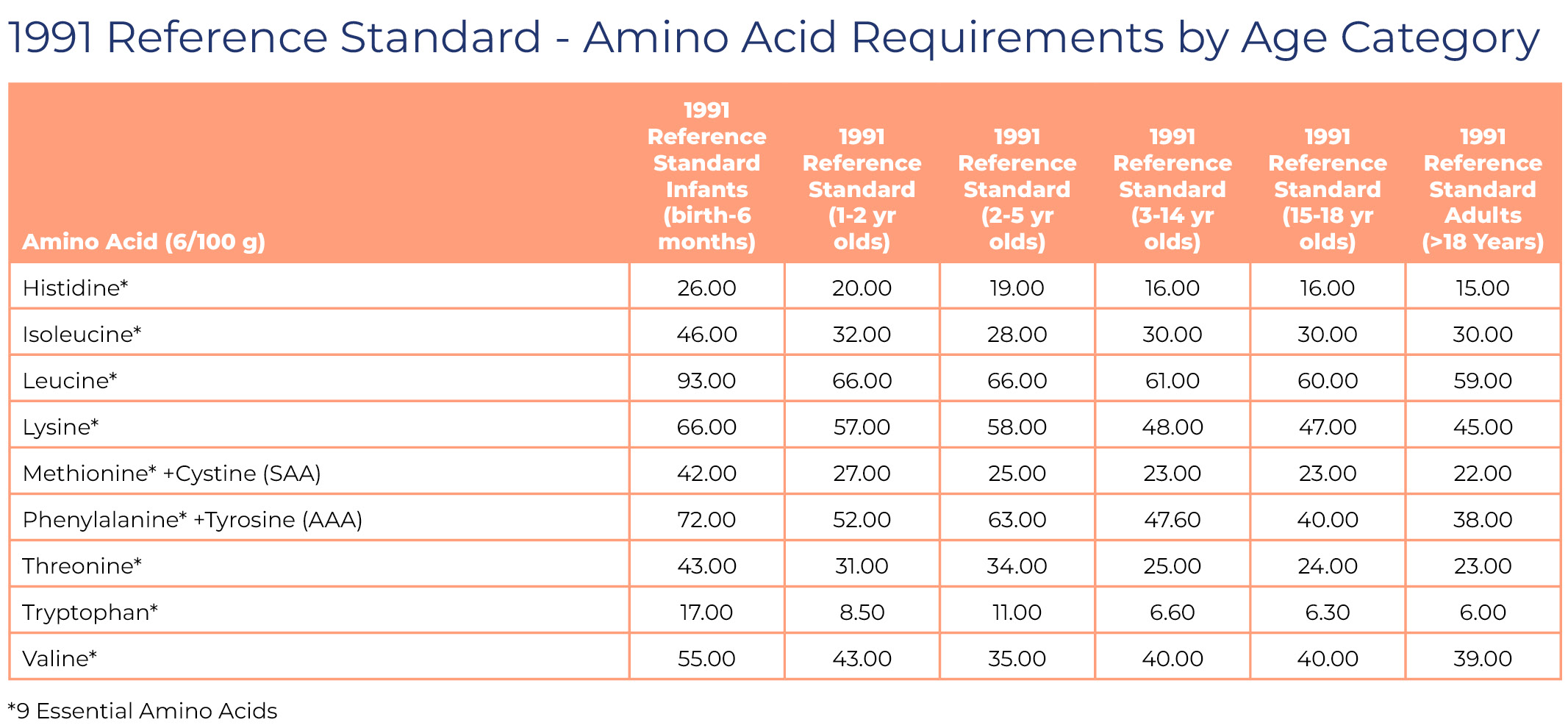When it comes to protein, the number of grams per serving tells only half the story. As we mentioned above, many plant proteins are deficient in one or more essential amino acids. For example:
- Legumes are typically low in methionine and cysteine but are rich in lysine.
- Grains are generally low in lysine but contain more methionine than legumes.
- Nuts and seeds often lack lysine but are abundant in methionine and cysteine.
Sourcing one plant protein for a formula is most likely not going to deliver a high quality optimal protein. In most cases, you have to use a blend of plant proteins to achieve a complete, quality protein.
The food industry measures the quality of a protein by its PDCAAS score. PDCAAS stands for Protein Digestibility Corrected Amino Acid Score, and it measures the quality of dietary proteins based on their amino acid composition and digestibility (and thus bioavailability).
The PDCAAS was developed in 1991 by the Food and Agriculture Organization (FAO) of the United Nations in collaboration with the World Health Organization (WHO). The development of the PDCAAS was a significant advancement in the field of nutrition and food science, providing a standardized and widely accepted method for evaluating and comparing protein quality across different protein sources.
Since amino acid requirements differ for humans at different ages (see chart), there are different “reference standards” for various age groups that the FAO/WHO have developed and that the FDA and CFR use to determine the PDCAAS for a specific age group. The current FDA mandate is that the reference standard to be used for all protein claims made on food (other than for infants) is for the 2-5 year old category.

In dietary supplements, including most sports nutrition products, this mandate does not exist so the reference standard for the specific age category that the products are being developed for, and marketed to, can be used.
The PDCAAS takes into account two key factors:
- Amino acid profile: Proteins that contain all nine essential amino acids in proportions similar to those required by the human body receive a higher score.
- Digestibility: Proteins that are easily digested and absorbed by the body receive a higher score
A protein’s PDCAAS score is calculated by dividing the amino acid content of a protein by the amino acid content of a reference protein, typically the amino acid requirements of a 2- to 5-year-old child, and then multiplying by a digestibility factor. The resulting score ranges from 0 to 1, with 1 being the highest score possible.
Product developers use the PDCAAS to develop functional foods and dietary supplements that provide targeted nutritional benefits. By selecting protein sources with high PDCAAS scores and optimizing formulations for digestibility and bioavailability, companies can create products that support specific health goals, such as muscle recovery, weight management and athletic performance.
Need help understanding how to use quality proteins in food and beverage development? Contact our SolvPro® experts today.




